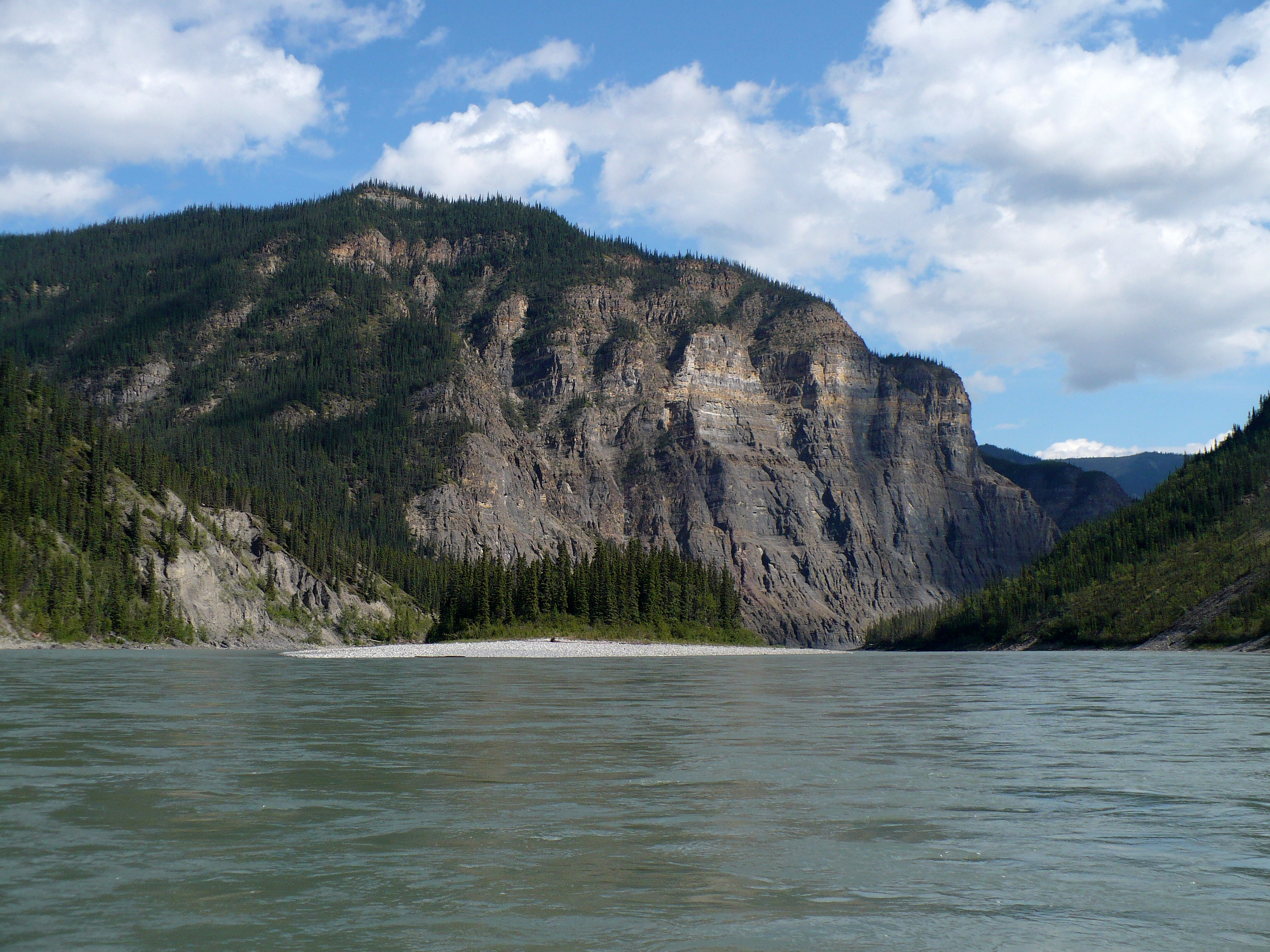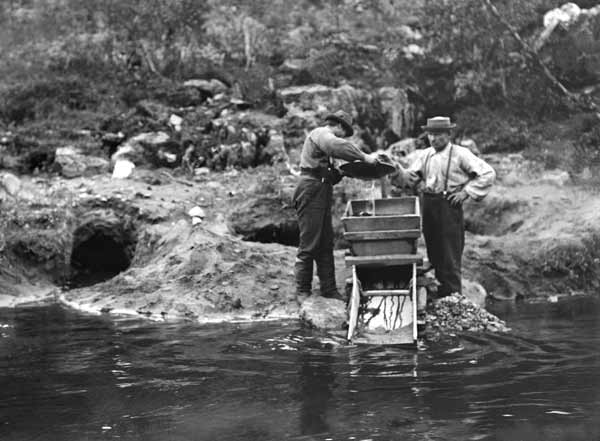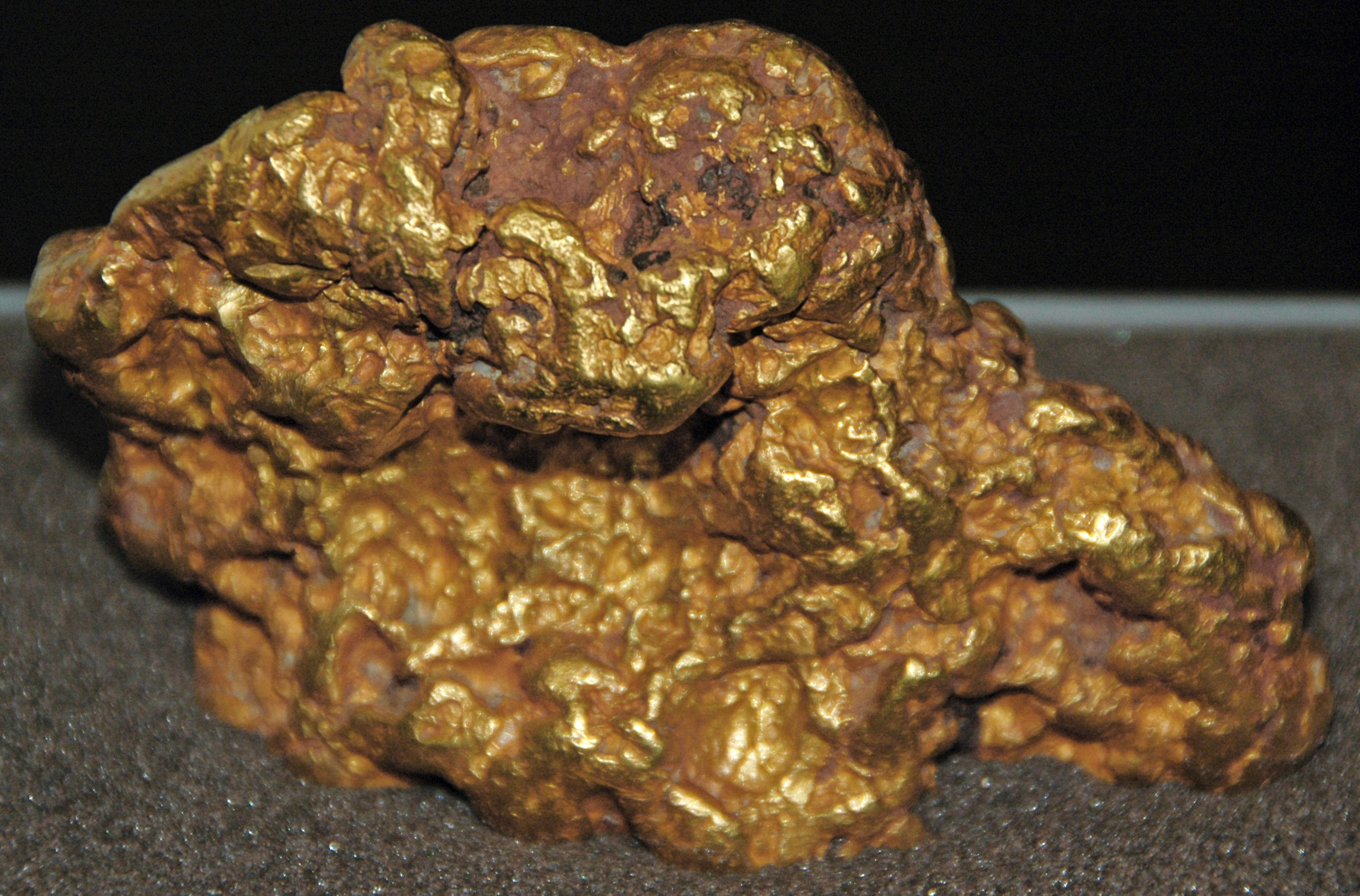“Men vanish in that country…and down the river they say it’s a damned good country to keep clear of.”
–Advice to Nahanni Valley prospector
Yes, it is true! I, too, have seen the Mr. Ballen video about the mysterious and frightening expanse of the Nahanni Valley, and I, too, am obsessed with it. I wanted to dig deeper.
If you’re into human folly, eerie deaths, forbidden forests, and unsolved mysteries, this one is for you.
Where civilization can’t save you
The Nahanni National Park Reserve is a 11,600-square mile stretch of mountains, forests, geysers, and grizzly bears way up in the northwestern part of Canada (think closer to Alaska than to Vancouver). Its centerpiece is the Nahanni River. This river is no ordinary river—it is one of the few on earth that is so powerful that mountains and cliffs grew up around it, rather than it being formed around them. After washing through 11-story-high canyons, it dumps into a waterfall twice as tall as Niagara falls.

It’s hard to deny that the valley is breathtaking (pun intended). But that beauty is something few people experience. The park is extremely remote, 311 miles from the nearest city of Yellowknife (which is also the only city in the Northwest territories, with a population of 19,500). The only way to get inside is via a multi-day hike, boat trip, or plane.
That might look simple on paper, but in practice, it is not. From the moment you get there, the Nahanni Valley shows its personality. Overland treks are arduous, and the landscape is frequently impassible. Boats have difficulty getting into certain parts of the valley without capsizing; the river has been known to abruptly change shape, baffling even longtime guides to the area. And planes have an unexplained tendency to smash into the mountaintops, earning the peaks the nickname Funeral Range.
Foreboding foundations
Because of these difficulties (and the stories we’re about to get into), the Nahanni National Park is not only uninhabited, but still largely untouched. History only tells us of a tribe that used to live there—the Naha.
We only know about the Naha via the Dene, who have occupied the Northwest Territories for 10,000 years. They and the Naha were not exactly friends. Dene history holds that Naha were erratic and violent, storming down out of the mountains to raid Dene villages and decapitate people.
At last the Dene got fed up and made a plan for retribution. After a lot of preparation, they snuck into the Nahanni Valley to surround the Naha camp. Though no one was on watch, the campfires were still burning. Food steamed in bowls. The Naha must still be in their teepees. At the signal, the Dene threw open the flaps, ready to attack—
Only to find the tents empty. The whole camp was empty.
The entire tribe had disappeared.
With a sudden premonition of doom, the Dene hightailed it out of there. No Naha was ever seen again.
Perhaps it is because of this episode that the Dene are said to avoid the Nahanni Valley. They maintain that there is something bad in those woods.* Specifically, they say that there is something bad along a certain 200-mile stretch of the river, where canyon walls swallow the shoreline and blot out the sun. There, caves dot the rock like pupils, their shadows hiding whatever might be looking out.

Glittering lures

Of course, why heed the warnings of people that have known the valley for millennia? Dudes heard there was gold.
We all know how well the Klondike Gold Rush went. From 1896 to 1899, 100,000 people set out for the Yukon, chasing tales of riches. The trip was so brutal that only 30,000 made it, and those that did found that there was scant gold to be had—only mud, mosquitoes, and disease.
Foolhardy as those who attempted the Klondike trip were, few were so foolhardy as to attempt to get there through the Nahanni Valley. But some did. And when it became clear that there wasn’t a lot of gold in the Yukon, a few dared to look there.
People, it turns out, never learn their lesson.
Poster boys for the Nahanni prospect experience
The two most (in)famous Nahanni Valley gold-seekers were brothers Willie and Frank McLeod. After a tip from a mysterious man named Little Nahanni, who flashed them a watch and chain supposedly made of Nahanni gold, the McLeods ignored the warnings about how dangerous the valley was and went there to seek their fortune.
They scanned the river for weeks, and found nothing. Maybe the tales were exaggerated. Maybe there was no gold at all. Finally, after passing through that long, towering expanse of canyons, the black caves looking silently down, the brothers spotted something glittering along the shoreline.

It was gold! There were fat nuggets of it. Thousands of them. Gold ribboned in the rock. It was unlike anything the brothers had ever seen. It was as if it had appeared by magic.
Ecstatic, Willie and Frank pulled ashore. Sifting quickly, they packed their boat to the brim. This was it—they were rich men. They turned their boat around, eager to get home and get spending.
But just as they were leaving, the rapids picked up. After weeks of managing the river successfully, it suddenly proved too much for them. Their boat smashed against the rocks, and water rushed in, washing away their possessions. They lost not only the gold, but their survival gear.
Hungry and half-drowned, the brothers faced a decision: continue with what scant gear they had left, or go home and regroup. It was an agonizing choice, but at last they decided to go home.
But the episode didn’t dampen their enthusiasm. Instead, it made them more obsessed with the valley than ever. They begged their brother Charlie to come back with them. If he did, they could all be rich—rich beyond imagining! Wary of the difficulties of the valley and their fanaticism, Charlie declined. Undaunted, Willie and Frank gathered new gear, hitched their packs, and, in 1906, went back into the woods without him.
The great McLeod find
A year passed. Charlie assumed that Willie and Frank really had hit the jackpot, and that they were working hard to make the most out of it. They would be home soon.
Two years passed. Maybe Willie and Frank had run into trouble. Charlie worried over all the perils of the Nahanni Valley that had made him hesitate in the first place—the crevices. The sinkholes. The animals that could tear you to bits.
Finally, he set out with a search party. After a long stretch of nothing, the team spotted a camp in some spruce trees along the left bank of the Nahanni, not far from the Second Canyon (Nahanni has four). Charlie rushed ashore. The camp was empty, but there was a message written on a broken dog sled runner: “We have found a fine prospect.”
If they had, Charlie didn’t know where it was. The shore and rocks were devoid of gold. There was nothing of the ribbons and nuggets his brothers had raved about. Charlie and his men fanned out, hoping to find some clue as to where Willie and Frank went. Then someone called out.
There were two corpses. In some versions of the story, they were tied to a tree. In others, one was on the ground, and the other was half in its tent, reaching toward a gun it never got to.
Both men had been decapitated. The heads were nowhere to be found.

Headless, frozen, and possessed
That incident alone was enough to give areas of the Nahanni Valley new names like Deadmen Valley, Headless Creek, Headless Range. But the McLeods were only two in a string of uncanny deaths and disappearances.
In fact, the laundry list of similar events is so long as to be almost comical, especially when you keep in mind how few people actually visit the area. These include:

- The incident with Swiss prospector Martin Jorgenson, who followed the McLeods in search of gold (as would many prospectors after him. None ever found it). In 1917, his cabin was found burned to the ground, his body lying nearby. Headless.
- In 1926, a woman named Anne Laferte disappeared from her hunting party overnight. Another hunter started awake at a weird splashing in the river. He looked out of his tent to see a woman that matched Laferte’s description. She was completely naked, scrambling up the hillside on all fours. Rocks skittered down and splashed into the river as she went. When she turned her face toward him, he shrunk back: her expression was horribly wrong, like a woman possessed. The hunter returned to his tent to wait out the night in a cold sweat. Laferte was never found.
- In 1929, another gold prospector, Angus Hall, vanished without a trace.
- In 1931, prospector Phil Powers’s cabin was also found burned to the ground, with such unnatural thoroughness that there was little of Powers left.
- In 1936, two more men—Mulholland and Eppler—disappeared into the wood.
- In 1940, a man named Holmberg was found dead.
- In 1945, yet another miner, this one from Ontario, was found dead in his sleeping bag. Also headless.
- Around the same time, an experienced trapper named John O’Brien suddenly went missing. After a search, he was finally found next to a campfire, frozen to death, matches still in hand. It looked to those who found him as if he had been flash frozen in place.
- In 1949, a man named Shcbbach was found in his cabin. His diary showed that after 43 days without food, he wrote DEAD MAN HERE on a piece of wood, nailed it to the cabin door, and went inside.
- At some point before 1962, a man committed suicide by setting off dynamite strapped around his waist.
- In 1962, an aircraft pilot miraculously survived a crash into the valley. He set up camp a short distance from where the plane went down. According to his diary, he was well provisioned, and confident that it would only be a matter of time before he was rescued. But though he was only 6 miles from his destination, and planes constantly flew overhead in search of him, he was never found. After about 50 days, his diary entries ended abruptly. His body was never recovered.
- By 1969, there were up to 44 recorded disappearances.
- In 2005, two experienced bushmen—David Horesay and Frederick Hardisty—vanished from their cabin. They were found a month later in places the search party had already combed through multiple times over—David in thick brush, with unexplained burns on his arms, and Fred floating in the river. Their families are dissatisfied with how the investigation into their deaths went, and have been left deeply unnerved and without closure. Per David’s stepbrother: “There were bullet shots all over the place, and there was a gunshot in the floor. The picture is bigger than just two guys, one [who] died of hypothermia and the other [who] died of drowning. There was something else that happened before all that came down.”
- Another woman, this one named May Lafferty, disappeared from a hunting party with her in-laws. Search parties found articles of clothing left one by one as she walked off into the woods. Her trail disappeared in impossible places along cliff edges or the banks of a stream rushing too fast too to cross, only to reappear further on. Like all the others, Lafferty was never found.

More nonlinear oddities
Much of the above is covered in the Mr. Ballen video. But on researching this post, I discovered that there were even weirder parts of the Nahanni Valley that he didn’t get into.
Besides being a hotspot for uncanny deaths, the Nahanni Valley is also a hotspot for sightings of strange lights, “aerial phenomena,” and UFOs. Obviously, this means that quite a few people blame the disappearances on aliens and/or ghosts (vengeful Naha spirits, anyone?). Some also suggest that the valley might be a place where the veil is thin, or even that it could be an entrance to the Hollow Earth.

But these aren’t the only possibilities. In addition to the Dene (again, ostensibly) mentioning “white walkers” and spirits shrieking in the dead of night, they also told stories of fearsome, hairy giants who used to live in the caves of the canyon walls. These massive dudes were led by a pale chieftess, and would kill and eat anyone who set foot in their territory.
The hairy men might also just be Bigfoot, who has been reported multiple times in the valley. Or maybe people are confusing them with a long-thought-extinct bear-dog creature called the Waheela (or Amphicyonidae), which has also been sighted there. Why not? There are also rumors of mammoths. And mastodons. The Nahanni Valley is crawling with cryptids.
This might be because, in addition to everything else it has going on, the Nahanni Valley is a bit of a geographical oddity. Along the path of the river are multiple hot springs, which create warmth and allow things like cherries and roses to grow, even in the subarctic winter. This mini “oasis” could support the life of any number of mammals. It also beckons to cold, helpless, stupidly curious humans, calling them to walk into the swirling, sulfur-scented mist.
Lose your head over Nahanni today!
In sum, there is a lot going on in the Nahanni Valley, more even than I had room to cover in this already-long post (if you want a fun bonus rabbit hole, check out the Mad Trapper, who may also have been responsible for some of the prospector deaths).
It’s not just me, Ballen, and the 3 million people who have watched his video who are interested in the Nahanni Valley. There is a documentary in the works, and plenty of ($8000) trips you can take to check it out for yourself.
So…will you? How healthy is your respect for the limitations of human survivability? Depending on your plans, I may have a steel turtleneck to sell.
*I could not find a resource from the Dene themselves saying any of this, so take it with a grain of salt. In fact, the Dene co-run the park, and (at least online) welcome visitors to it with open arms.
IMAGE CRED: Thanks to Josh Steinitz for the ginormous falls, Paul Gierszewski for the canyon, Emil Sarlin for the dudes livin’ their best life, James St. John for the nugget, Wilhelm Gunkel for the shirtless dudes, Dustin Scarpitti for the spooky trees, Robert Bye for the rapids, and Thomas Lipke for the bear. Featured image also by Paul Gierszewski.





0 Comments